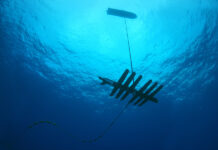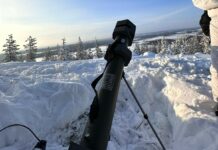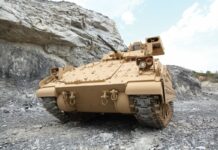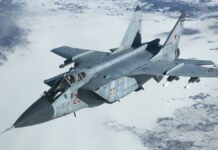The combination of climate change and increased tensions with Russia is increasing NATO nations’ focus on security interests and military operations in the Arctic and other cold-weather zones.
A significant number of NATO members already operate vehicles optimised for these zones. Several are currently upgrading or replacing their cold-weather fleets.
Several categories of vehicle are designed or optimised for cold-weather operations, including snowmobiles and similar open configurations. This article will focus on medium-sized, enclosed vehicles frequently designated as Cold-weather All-Terrain Vehicles (CATV). These CATVs feature very broad tracks which distribute vehicle weight, reducing ground pressure far below that of wheeled or standard tracked vehicles. This enables them to traverse deep snow as well as ice and broken ground, including steep mountainous terrain.
They are also capable of crossing other difficult terrain, including marsh and bogland, as well as sand. In fact, many of the same NATO units which deploy their CATVs for Arctic and European mountain operations have also dispatched them on missions to Africa, the Middle East and Afghanistan. Depending on configuration, they can be used for personnel transport, medical/casualty evacuation, engineering and logistics vehicles, or as sensor and weapons platforms.
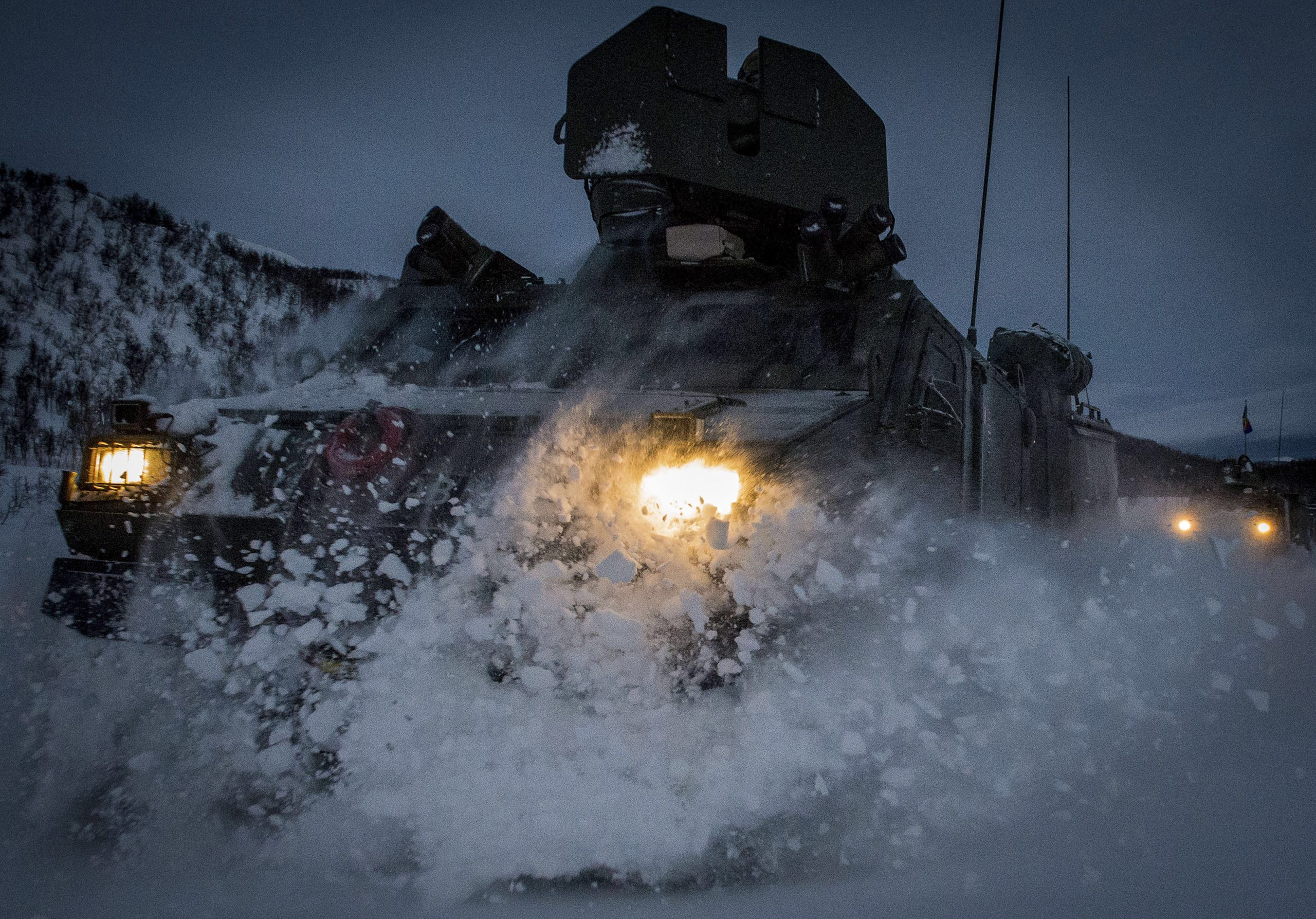
BAE Hägglunds
BAE Systems Hägglunds AB currently is the clear market leader. Its vehicles predominate in the current CATV fleets, and are among the frontrunners in ongoing competitions for new vehicle acquisition. Headquartered in Sweden, the firm is currently a subsidiary of BAE Systems AB, BAE Land Systems and, ultimately, of UK-based BAE Systems.
The majority of BAE Hägglunds’ CATVs have designators beginning with Bv (Bandvagn, Swedish for tracked vehicle), although some users assign each class a different name. The typical configuration consists of a front and rear cab connected via a coupling link and electric cables. This articulated assembly enhances manoeuvrability over difficult terrain. The engine (optionally gasoline or Diesel) and driver reside in the front cab. The tracks of both cabs are powered by electric motors. The Bvs are amphibious. In water they are propelled by the paddle-effect of the tracks. The vehicles are airmobile (sling-load under a heavy-lift helicopter or internal carry in a C-130 equivalent tactical transport).
Bv206
The Bv206 family of vehicles became operational in 1980. More than 11,000 units were sold globally. The Bv206 remains active with the armed forces of 25 nations, although the majority of vehicles are nearing the end of their service life. The unarmoured personnel carrier carries the driver plus five soldiers in the front cabin and 11 in the rear; the armoured variant carries four plus eight dismounts. Variants include a flatbed cargo carrier, a tactical operations centre, an anti-tank platform armed with a recoilless rifle or anti-tank guided missiles (ATGM), and an ambulance.

The nominal successor to the Bv206 family is the BvS 10 (Bandvagn Skydder 10 or Protected Tracked Vehicle 10). It was originally designed jointly by Hägglunds and the British Ministry of Defence (MoD). First deliveries to the British Royal Marines began in 2005 under the designation All-Terrain Vehicle (Protected) or ATV-P, although the Marines refer to it as the ‘Viking’. It is currently in service in Austria, France, The Netherlands, Sweden and the UK. In some services the BvS 10 is known as the Bv210.
While externally similar to the Bv206, the BvS10 is considerably larger, and comes with a newly designed hull and chassis, as well as a stronger engine. Other improvements include greater ground clearance, higher road speed (70 km/h versus 50 km/h), and up to 6.35 tonnes (7 tons) of payload capacity – around double that of the Bv206. The 8 m long amphibious armoured vehicle has a gross vehicle weight of 15.5 tonnes. In the troop carrier configuration, it carries 12 combat-equipped soldiers plus the commander and driver. The design is semi-modular, permitting reconfiguration of payloads, weapon mounts and add-on armour options. The hull is protected to STANAG 4569 level 2 as standard, but this can be optionally enhanced to level 4. Standard Remote Weapon Station (RWS) mounts accommodate machine guns up to 12.7 mm as well as 40 mm grenade launchers, but the BvS10 can also be configured as a mortar or missile carrier (anti-tank or air defence). Operations are possible at temperatures between -46 °C and +46 °C.

Bv410
The BvS 10 Mk IIb is the most advanced variant of the armoured BvS family, and is sometimes also designated as the Bv410. The underbody of the new vehicles has been upgraded to provide improved mine protection. Cargo capacity has also been improved. Additional variants include air defence missile carrier and artillery hunting radar carrier. Seven countries currently operate the BvS 10 Mk II/Bv410. The vehicles can be further customised to meet national requirements. The BvS 10 AUT, which entered service with Austria’s 6th Mountain Brigade in 2019, is often considered the most advanced configuration due to its advanced sensor package and Combat NG battle management system.
Beowulf
The Beowulf is the unarmoured version of the BvS 10, and was unveiled in 2015. It features a redesigned cabin with a modernised user interface, and can accommodate the two-person crew plus 12 dismounts, or alternately 7.25 tonnes (8 tons) of cargo. The Cummins Diesel engine, Allison transmission and hydraulic system of the Beowulf (and the entire BvS 10 family) are made in the USA.
ST Engineering
The Land Systems arm of ST Engineering is attempting to challenge BAE Hägglunds for a slice of the CATV market. The Bronco All-Terrain Tracked Carrier (ATTC) family introduced in 2001 is currently only in service in Singapore and Thailand (the British army operated the Bronco 2 under the Designation Warthog from 2009-2014). According to ST Engineering, the vehicles can traverse 82 percent of the world’s terrain in adverse environments including Arctic conditions. A wide array of configurations for various combat support and combat services support functions are offered. Variants include troop carrier, ambulance, command vehicle, fuel carrier, counter-rocket radar carrier, engineering vehicle and repair and recovery vehicle. A special variant designed in cooperation with the Singapore armed forces, serves as a 120 mm mortar platform.

The latest iteration is the Bronco 3, which was presented at DSEI 2017. The armoured vehicle is designed along similar lines as the Swedish Bvs, with two articulated cabs and amphibious capability. The firm touts the digital vehicle architecture which optimises man-machine interface; the 360° camera/situational awareness system with night-vision and infrared sensor capability; and internal ergonomics intended to increase crew comfort and accommodate personal equipment. With a re-engineered chassis, the 10.2 tonne Bronco 3 is around 2 tonnes lighter than its predecessors, but has a larger capacity for both personnel (total of 12 including commander and driver) and cargo (6.3 tonnes). It has a V-shaped underbelly fashioned from a single plate to improve vehicle and crew mine protection, and features enhanced all-around armour protection compared to predecessors. Performance trials, including cold-weather testing in Finland, have proven the vehicle’s reliability at extreme temperatures ranging from -45 °C to +49 °C. The firm is openly targeting countries in North America and Europe which will soon need to replace their aging Bv206 fleets.
North American Procurement Programs
US Army CATV
In June 2020 the US Army issued the Request for Prototypes Proposals for what is officially designated as the Cold weather All Terrain Vehicle or CATV acquisition program. The CATV programme aims to replace the Bv206 units currently operated under the designation ‘Small Unit Support Vehicle’ (SUSV), which the Pentagon has classified as no longer sustainable. In April 2021 the Army awarded competitive prototyping contracts to two contenders: a team of two BAE divisions – US-based BAE Land and Armaments L.P. and BAE Hägglunds – which presented the Beowulf; and a team consisting of Oshkosh Defense and ST Engineering, proposing the Cobra 3. For the American procurement programme, the two US-based firms took the lead in each team.
The competitors supplied two prototypes each, and field testing was conducted from August 2021 through January 2022. The final phase of the competition involved intensive testing under operational conditions in Alaska. Each contender was evaluated on such factors as readiness and reliability in extremely cold weather, navigating complex terrain, amphibious operations, and handling in deep snow. Soldier feedback was considered a major factor in the ultimate ranking.
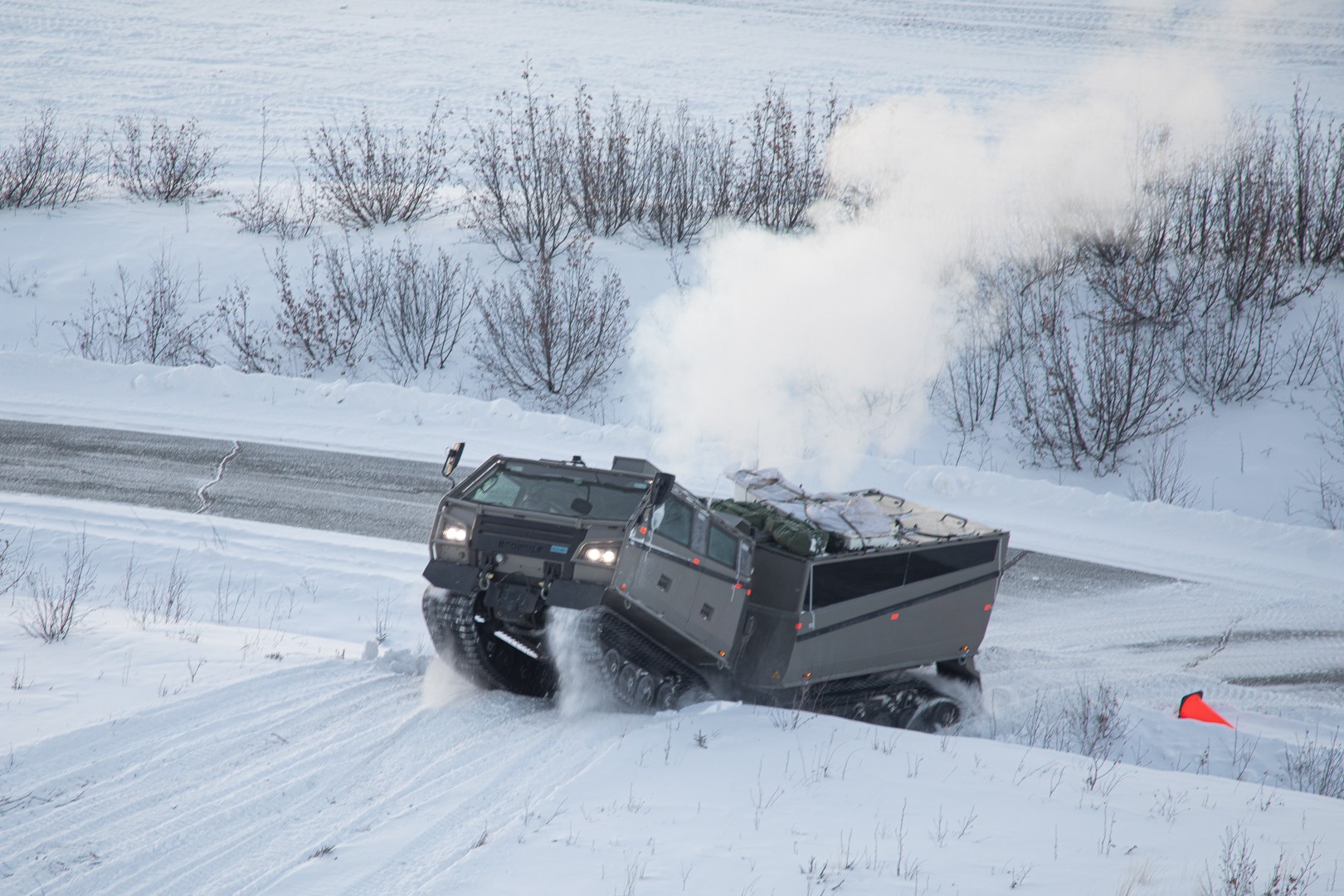
Credit: US Army
The Pentagon decided in favour of the Beowulf. On 22 August 2022 the procurement contract for 110 vehicles was signed, with the total requirement being 163 units. The first units are to be delivered in the fourth quarter of Fiscal Year 2023 to the US Army Northern Warfare Training Centre at Fort Wainright, Alaska. Deliveries of all vehicles are to be completed by 2029. Both the active duty Army and the Army National Guard will receive vehicles. The majority of the CATVs will be operated by the US Army’s 11th Infantry Division based in Alaska. The unit – unofficially dubbed “America’s Arctic Airborne Division – is being optimised for sustained operations in the Arctic as well as in other extreme cold weather environments. To support these capabilities, the Beowulf will be tasked with tactical personnel and supply transport, medical evacuation, and command and control missions. The CATV is expected to provide a significant performance and survivability improvement over the SUSV in extreme cold-weather, mountainous and high-latitude environments.
Canadian Army DAME
The Domestic Arctic Mobility Enhancement (DAME) project aims to replace Canada’s Bv206 vehicles with a medium-sized, amphibious, high mobility vehicle. The stated goal is to enhance the Canadian Armed Forces’ domestic operations reach, in alignment with Canada’s strategic objectives for the North and Arctic.
Groundwork for the DAME project began in 2015. Progression has been slower than initially anticipated. Canada published an official Expression of Interest to industry in May 2022, with an opportunity closing date of 2 June 2023. The most recent Canadian MoD information anticipates beginning implementation of procurement in the 2025–2026 timeframe, followed by deliveries commencing circa 2028 and running through 2030. The official requirement range is currently 126-170 units, covering four variants: troop transport, logistics transport, command vehicle, and ambulance. Likely candidates are considered the BvS 10 (including the Beowulf), and the Bronco 3.
Europe’s Collaborative All-Terrain Vehicle (CATV) Programme
The Collaborative All-Terrain Vehicle programme is being financed through European Union funds, and aims to jointly procure Bv410 CATVs for several European armed forces. Initially formed as a bilateral partnership between Germany and the UK in 2019, The Netherlands and Sweden joined in 2020. The programme remains open for other EU member states to join.

(Credit: Austrian MoD)
In December 2021 the Swedish government, acting as the programme’s lead country and central purchasing body, issued an invitation to tender to BAE Systems Hägglunds for a total potential procurement of 500–900 vehicles. On 23 November 2022, the Swedish MoD and BAE Hägglunds signed a contract for delivery of an initial 436 units. Once delivered, the vehicles will be customised to national specifications using locally-developed mission systems by contractors in the receiving countries. Primary configurations will include troop transport, ambulance, logistics (flatbed) and communications variants.
This procurement order is in addition to national acquisition contracts recently placed or currently planned by several governments. Germany is expected to receive 140 units from the joint CATV order in the 2024–2027 timeframe, replacing a portion of the mountain brigade’s Bv206 fleet. Britain’s Royal Marines, which upgraded nearly 100 of their roughly 150 BvS 10 Viking ATVs to the Bv410 standard in 2016, will be replacing the remaining Vikings through the CATV program. The Swedish army, which operates circa 1,100 Bv206 and more than 150 Bv410, signed a national acquisition contract for 127 additional Bv410 systems in May 2021. Deliveries are expected to be completed in 2024. Additionally, up to 200 of the vehicles ordered under the joint CATV contract are slated for Sweden.
The Netherlands is also pursuing a dual-track approach to refreshing its inventory. In June 2021 the Dutch MoD announced plans to procure 179 Small All-Terrain Vehicles to replace a portion of the Bv206D and Bv10 currently deployed by the Netherlands Marine Corps. This Future Littoral All-Terrain Mobility Patrols Vehicle (FLATM PV) project will both modernise and expand the ATV fleet. To save time, the MoD is planning to choose an as yet unspecified vehicle which is already in production or production-ready. Requirements include a minimum capacity of four soldiers and the ability to incorporate the latest communications and data systems. Deliveries are supposed to take place in the 2025– 2028 timeframe, to ensure “future-proof, all-terrain and snow mobility for the light amphibious units.” Previously, in an October 2020 announcement Amsterdam stated they would procure 124 replacement vehicles through the joint Collaborative ATV programme in the 2024-2027 timeframe. In an early 2022 interview the director of the Dutch Defence Materiel Organisation, Vice Admiral Arie Jan de Waard, confirmed that Amsterdam still intends to procure replacements for the Dutch Marines’ all-terrain vehicles through the European CATV program.
Increasing Demand
The next few years should see a flurry of acquisition activity as the Bv206 fleets of another 20+ countries approach the end of their service lives. Both ST Engineering and BAE are stepping up their marketing activities to take advantage of the impending demand. To date, BAE Hägglund’s position as market leader remains intact. The recent US Army CATV contract marks the first order for the unarmoured Beowulf. So far, the majority of armed forces continue to favour the protected vehicles of the BvS 10 family. Given the rising tensions with Russia, in particular, it seems likely that vehicle protection will remain a desired attribute for Arctic operations.
Sidney E. Dean





